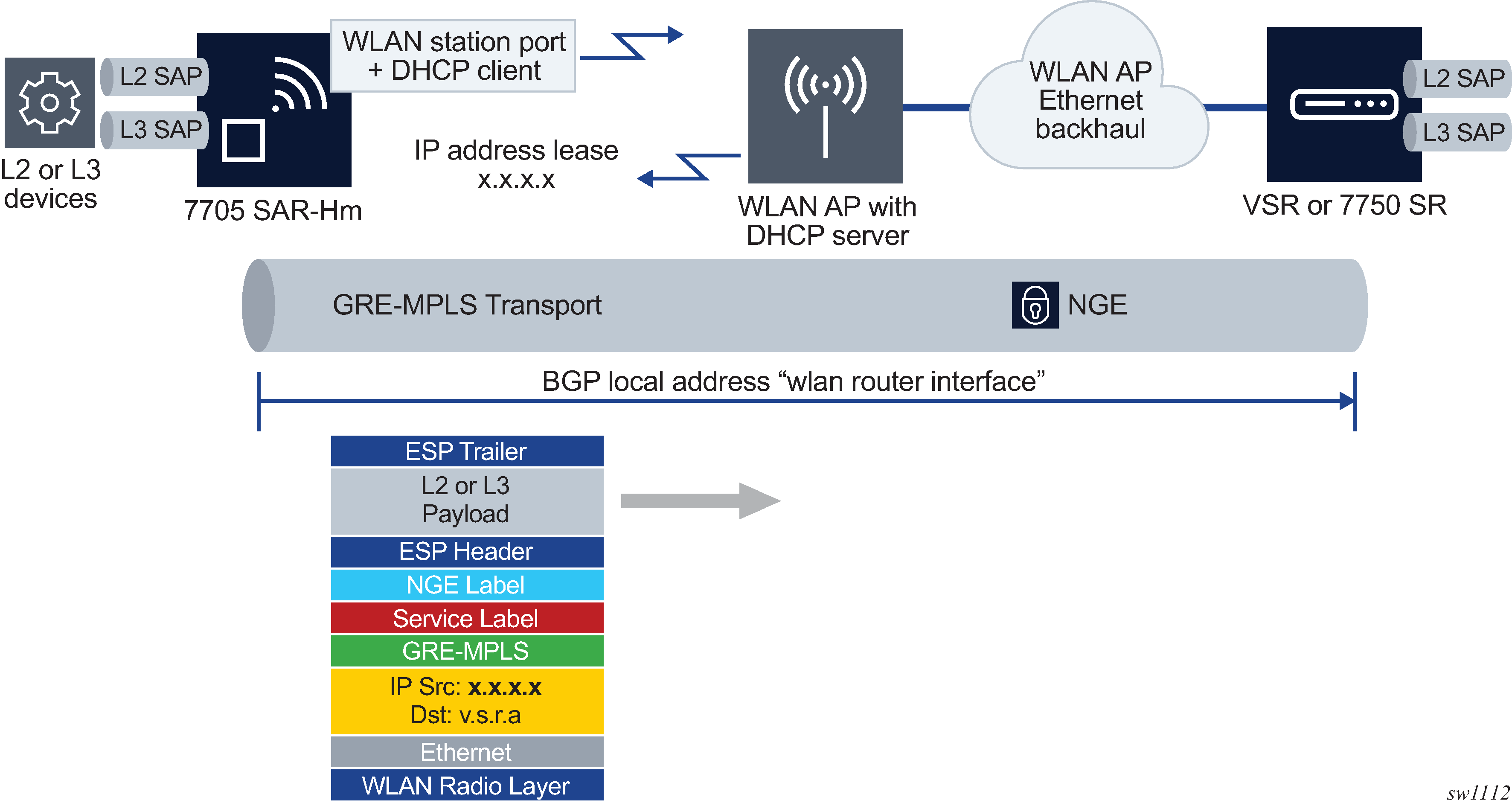The WLAN station port provides network-level connectivity to a WLAN AP to provide end-to-end services between the node and another Nokia router. A network interface configured on the WLAN station acts in a similar fashion to network interfaces configured on Ethernet ports. BGP routing and GRE-MPLS-based SDPs can traverse the network interface on the WLAN station port. The remote AP that the WLAN station port connects to must provide the necessary reachability to another Nokia router that can terminate the services from the node.
Figure: Services transport over the WLAN station port illustrates how the WLAN station port connected to an AP can provide end-to-end services between the node and another Nokia router.

When configuring services over the WLAN station port, the router interface IP address can be configured manually on the router interface or it can be automatically discovered by the DHCP client configured on the router interface.
When the IP address is configured manually, services are established using standard methods to set up services over Ethernet ports because the WLAN station operates as a standard Ethernet port when it is operationally up.
For information about an automatically discovered IP addresses using the DHCP client, see Services over Ethernet with DHCP client.